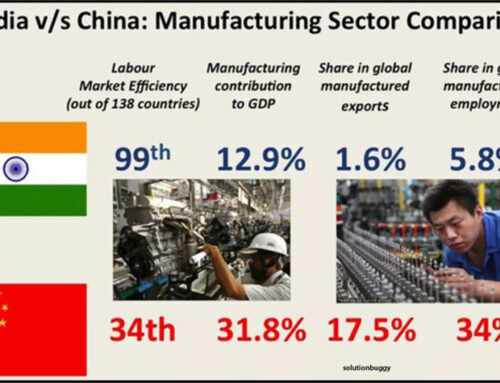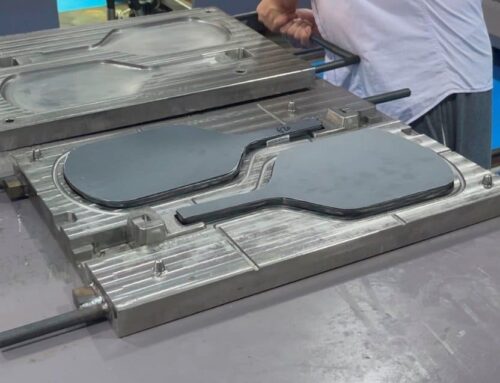When you want to purchase 50 pickleball paddles, suppliers often tell you that this quantity is too small and cannot be accepted. The minimum order quantity (MOQ) might be 100, 300, or even 500 units. At this point, you might wonder: why set a MOQ?
MOQ is not only a crucial tool for suppliers to ensure profitability but also a reflection of value alignment between supply and demand. People may risk their lives for profit, but no one does business to lose money.
What is Minimum Order Quantity?
Minimum Order Quantity (MOQ) is the minimum number of units that a supplier is willing to accept in a single order. It represents the lowest quantity that a supplier can accept for production, procurement, or sales to ensure the economic feasibility of the transaction. Simply put, if the MOQ is 100 units, you cannot order 99 units.
The setting of MOQ reflects the supplier’s consideration of multiple factors in their operations, including production costs, operational efficiency, and market demand. By setting a MOQ, suppliers can ensure that the resources and efforts they invest will yield an appropriate return, thereby maintaining the sustainability of their business.
Additionally, MOQ is often determined based on industry standards and competitive pressures. Suppliers must consider the pricing strategies of their competitors, and setting a competitive MOQ can influence market positioning. A supplier may set a higher MOQ to signify exclusivity or quality, while a lower MOQ might be positioned to attract smaller buyers or emerging market segments. This strategic decision can define the supplier’s brand image and influence customer perceptions.
Why Set a Minimum Order Quantity?
1. Profitability
The primary reason suppliers set a MOQ is to ensure profitability. Suppliers must cover the costs associated with raw materials, production, shipping, storage, and management when fulfilling orders. These costs are particularly significant when it comes to expensive machinery, materials, and even seemingly trivial management fees. Setting a MOQ helps suppliers distribute these costs across larger orders, ensuring that each order generates a certain profit.
Moreover, smaller orders often struggle to cover these fixed costs, leading to insufficient profitability for suppliers after fulfilling the order. Therefore, by setting a higher MOQ, suppliers can focus their resources on handling larger orders, thus enhancing economic efficiency.
Another critical factor is the reduction of operational risks. By securing a larger order through a high MOQ, suppliers can better forecast production schedules, manage inventory, and minimize the risks associated with demand fluctuations. Larger orders provide more predictable cash flow, enabling suppliers to plan more effectively and reduce financial risks. This financial stability is crucial for sustaining long-term business operations, particularly in industries with tight profit margins.
| Scenario A – Large MOQ | Scenario B – Small MOQ | Scenario C – No MOQ | |
|---|---|---|---|
| Batch size from supplier (units) | 10,000 | 10,000 | 10,000 |
| MOQ offered to the customer | 100 | 10 | 1 |
| Number of boxes sold per pallet | 100 | 1000 | 10000 |
| Selling price (per unit) | $0.10 | $0.10 | $0.10 |
| Sales Turnover | $1000.00 | $1000.00 | $1000.00 |
| Cost Per Unit | $0.08 | $0.08 | $0.08 |
| Total Cost From the Supplier | $800.00 | $800.00 | $800.00 |
| Cost to breakdown the pallet & repackage (per box) | $0.20 | $0.20 | $0.20 |
| Total Processing Costs | $20 | $200 | $2000 |
| Cost of goods sold | $820.00 | $1000.00 | $2800.00 |
| Gross Profit | $180.00 | $0.00 | -$1800.00 |
2. Value Matching
MOQ also helps suppliers filter out customers who align better with their business objectives. Every supplier has limited resources and energy, so they need to prioritize serving customers who can bring higher sales volumes and are more likely to establish long-term cooperation. MOQ becomes an important tool in this filtering process, ensuring that the supplier’s partners have a certain level of business scale and purchasing power.
For example, a supplier that produces custom furniture may set a MOQ of 100 units. This filters out customers who only need small quantities, allowing the supplier to focus on serving clients that align with its business model, thus optimizing production processes and enhancing the quality of the customer base.
Furthermore, MOQ can serve as a tool for maintaining the quality and consistency of production. Larger orders allow suppliers to streamline production processes and maintain a consistent level of quality across all units produced. Smaller orders, on the other hand, may require frequent changes in production setups, increasing the likelihood of errors and inconsistencies. By setting a MOQ, suppliers can maintain higher standards of quality control, which is essential for building and sustaining a strong brand reputation.
3. Competitive Positioning
In highly competitive markets, MOQ can also be used as a strategy to differentiate a supplier from its competitors. A higher MOQ might indicate a focus on high-volume, high-value customers, positioning the supplier as a premium provider. Conversely, a lower MOQ could be an entry strategy for tapping into new or emerging markets, where smaller buyers are prevalent.
By carefully setting and communicating their MOQ, suppliers can signal their market positioning and attract the right type of customers. This strategic use of MOQ not only affects short-term sales but also contributes to the long-term development of the supplier’s market presence and brand identity.

Benefits of MOQ for Buyers
1. Cost Advantages
When buyers meet the supplier’s MOQ, they often enjoy lower unit prices. This is because suppliers can reduce costs through mass production and pass on the savings to customers in the form of favorable prices. This cost advantage is particularly significant for buyers who need to purchase in large quantities.
Moreover, purchasing larger quantities at once can also reduce the per-unit cost of logistics. Shipping larger volumes in a single shipment is often more cost-effective than multiple smaller shipments. Buyers who meet the MOQ can therefore not only save on the product cost itself but also reduce their overall logistical expenses.
2.Priority Supply and Service
Customers who meet the MOQ are usually regarded as important clients by the supplier and may therefore enjoy priority in production schedules and logistics services. In times of high demand or supply shortages, these customers are more likely to secure timely supply, ensuring the continuous operation of their business.
Furthermore, suppliers often provide enhanced customer support to those who place larger orders. This can include faster response times, dedicated account management, and more flexible payment terms. For buyers, these benefits can lead to a more efficient and reliable supply chain, reducing the risk of disruptions and ensuring that their business runs smoothly.
3. Stable Long-term Cooperation
MOQ can help buyers establish more stable cooperative relationships with suppliers. Suppliers are often more willing to invest resources in maintaining and strengthening cooperation with customers who can consistently meet the MOQ. This stability is reflected not only in supply chain management but also in better payment terms, customized services, or opportunities for joint product development.
In addition, a stable relationship built on meeting MOQ can lead to more collaborative efforts between the buyer and supplier. For example, suppliers may be more willing to share insights into new product developments or offer early access to innovative technologies. This collaborative approach can give buyers a competitive edge in their respective markets, allowing them to stay ahead of industry trends.
4. Improved Procurement Planning
When customers understand the supplier’s MOQ, they can better plan their procurement strategies. By making bulk purchases in one go, customers can reduce the need for frequent orders, thereby lowering management and logistics costs. This purchasing method helps optimize inventory management and improve operational efficiency.
Moreover, meeting the MOQ can lead to better forecasting and demand planning. With a clearer understanding of order quantities, buyers can align their procurement schedules with production cycles, reducing the risk of stockouts or overstocking. This improved planning can result in more efficient use of resources, better cash flow management, and ultimately, a stronger financial performance.
5. Opportunities for Exclusive Products or Custom Services
Some suppliers may only offer special products or customized services to customers who meet a certain order quantity. Therefore, customers who meet the MOQ may gain access to these exclusive services or products, giving them a competitive edge in the market.
For example, buyers who regularly meet or exceed the MOQ might be offered the opportunity to co-develop new products with the supplier. This collaboration can lead to the creation of unique products that are tailored to the buyer’s specific market needs, providing a significant competitive advantage. Additionally, these exclusive arrangements often come with favorable terms, such as extended warranties or preferential pricing, further enhancing the value of meeting the MOQ.

Factors Affecting the MOQ for Pickleball Paddles
1. Materials
Different materials have varying minimum order quantities. For common carbon fiber materials in the market, the MOQ might be 100 units or even lower. However, for high-end materials like titanium fiber or DuPont Kevlar fiber, which are not standard and are expensive, suppliers may not stock large quantities. In this case, the MOQ for customization might be 300 or 500 units.
The availability and cost of raw materials are critical factors in determining MOQ. Suppliers must consider the minimum quantity they can economically purchase from their own suppliers, as well as the lead times associated with acquiring these materials. For instance, rare or specialized materials may require larger minimum orders from upstream suppliers, which in turn necessitates a higher MOQ for the finished products.
2. Production Process
The complexity of the production process also directly impacts the setting of the MOQ. For example, the water transfer printing process, which requires manual operation throughout, may have a MOQ of 300 units or more. In contrast, the cold pressing process is relatively simple and has lower profit margins, so the MOQ is typically set at 300 units or more. The hot forming process, although more complex, offers higher profit margins, so suppliers might set a lower MOQ of around 100 units.
The level of automation in the production process also plays a role. Highly automated processes can produce large volumes at lower costs, allowing for a lower MOQ. Conversely, processes that require significant manual labor or specialized skills may necessitate a higher MOQ to justify the additional labor costs and time. Suppliers must balance the efficiency of their production processes with the demands of the market when setting their MOQ.
3. Profit Margins
The profit margins of different processes also determine the level of the MOQ. The cold pressing process, due to its simplicity and lower profit margins, typically has a higher MOQ. On the other hand, the hot forming process, despite being more complex, is associated with higher profit margins, leading suppliers to accept lower MOQs.
In addition to process-specific profit margins, suppliers must also consider overall business profitability. If a supplier operates in a highly competitive market with thin margins, they may set a higher MOQ to ensure that each order contributes meaningfully to their bottom line. Conversely, in markets where suppliers enjoy higher margins, they may offer more flexibility in their MOQ, particularly if doing so can help them
capture new customers or expand their market share.

FAQ
What if I can’t meet the MOQ?
If buyers cannot meet the supplier’s MOQ, they can negotiate with the supplier. In most cases, suppliers may offer some special considerations for the first order, viewing it as an investment in future cooperation.
However, it’s essential to approach such negotiations with a clear understanding of the supplier’s limitations. While some suppliers may be willing to lower their MOQ for a first-time order, this flexibility often comes with trade-offs, such as higher unit prices or longer lead times. Buyers should weigh these factors carefully and consider whether it may be more beneficial to increase their order quantity to meet the standard MOQ and secure better terms.
Are there risks with companies offering low MOQs?
Low MOQs below the market average may carry risks. If, under the same conditions, other suppliers have a MOQ of 100 units while one supplier only requires 1 unit, the product quality may need to be questioned. Typically, a significantly low MOQ may indicate that the supplier has compromised on quality to attract customers.
In addition, suppliers offering unusually low MOQs may be cutting corners in other areas, such as material quality, production processes, or after-sales support. Buyers should conduct thorough due diligence to ensure that the supplier can deliver products that meet their quality standards. This may involve requesting samples, visiting the supplier’s facilities, or seeking references from other customers.
conclusion
By understanding the principles and factors behind MOQ, buyers can better grasp the supplier’s business logic and develop more reasonable procurement strategies. This not only helps reduce costs and improve supply security but also gives the company a competitive advantage in the market.
Moreover, as global supply chains continue to evolve, the importance of MOQ as a strategic tool will likely grow. Suppliers and buyers alike must stay attuned to changes in market conditions, technological advancements, and customer preferences to optimize their MOQ strategies and maintain a competitive edge. Whether through leveraging data analytics to forecast demand more accurately or adopting more flexible manufacturing processes, businesses that effectively manage their MOQ will be better positioned to succeed in the increasingly complex global marketplace.
The End about Mayvoci
1)Design:Over 100 paddle designs and photography service to assist start-up.
2)Professional:Focus on various of paddles manufacturing for 6 years
3)Quality:Strict quality management system to provide safety and satisfaction for customers
4)Amazon:Flexible comprehensive solution to make sure each Amazon seller is well cared.
5)Excellent Team:Experienced paddle experts & dynamic sales team give you 5-star service





